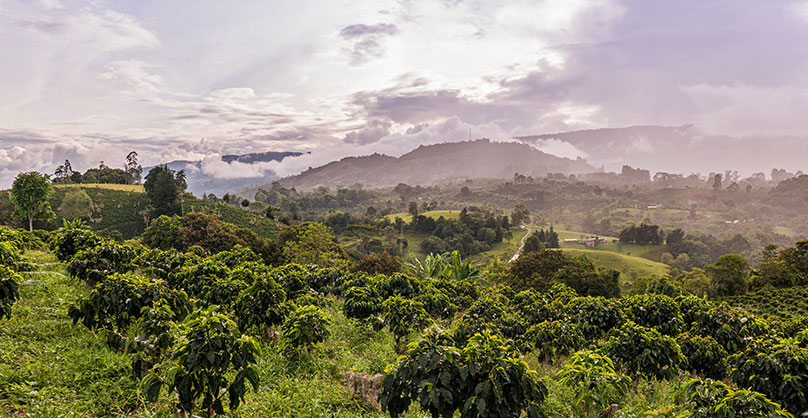
HUILA OR WON’T YA?
Of course you huil. Huila is delicious. It’s very likely you’ll have sipped many a cup from this luscious region before, delighting in its rich, brown sugary sweetness and stone fruit, citrus or floral top notes. It’s one of Colombia’s main specialty coffee producing regions, nestled in a valley way up high – an oxymoron to our antipodean sensibility – but the normal way of things in the mountainous terrain of much of the volcanic and tropical belt of the world.
Bordered by the Andes, and sitting in the Magdelena Valley, the coffee farms benefit from the nutrient rich volcanic soil, the golden ratio of sun and temperature, the model amount of shade. The four subregions each have their distinct microclimate that create unique profiles. Pitalito in the south is the major producing region and has the lowest temperatures, La Plata and Garzon with slightly warmer average temperatures, and Naiva, a warm and dry climate with an average temperature of 27 degrees. This idyllic pocket of paradise of biodiversity is what contributes to the complexity of flavour. the delicate body, caramel sweetness and bright acidity.
These regions primarily consist of small producers, the average family farm about 1.5 hectares, and most, according to Pedro* own their own wet mill. Consequently, each farming family must focus on quality over quantity to make a sustainable living, the love and pride for their work is evident on the scoring table, in the cup, how they experiment with new techniques, and how they plan for the future of coffee
In terms of future planning, they’re on top of that too. Global warming has changed the ecosystem of many, if not all coffee growing regions, and varietals are often unable to protect themselves from the changing conditions. This is most notable at the 1300 masl mark, where farms are infested by the coffee berry borer due to the higher temperatures, causing failing crops, and producers to abandon (?) their land and move south. But Huila knows that their coffee is too good to sit idly by and let the world be deprived of its floral and sweet complexity. They are a land with a plan.
And thus Plan Huila 2050 was rolled out in 2014. It’s a strategy to research and develop sustainable practices, promoting research into the effects of changing temperature, precipitation, and soil quality and using the data to develop technologies, infrastructure, services and practices to protect the water sector, agricultural industry, the forest and natural ecosystem, and the citizens of Huila against global warming.
This is part of why coffee from this region is so special. It’s a community of hard working people who love and cherish each other, their produce, and the land that gives us so much…
The specialty coffee industry in Colombia is well established, and many have access to the technology, education and infrastructure to continue to push the boundaries of the quality they can achieve.
CITATIONS
https://perfectdailygrind.com/2018/03/a-coffee-buyers-guide-to-huila-colombia/
https://pdf.usaid.gov/pdf_docs/PA00KBX6.pdf
https://e3asesorias.com/wp-content/uploads/2016/01/riesgo-climatico-para-la-red-vial-primaria-de-colombia.pdf
Image courtesy of https://www.colombia.co/en/colombia-culture/gastronomy/a-journey-to-huila-s-coffee-of-origin-internationally-recognized-for-its-high-quality/
Be The first to know about new digs.

